Matador Network's Blog, page 1218
November 20, 2018
California Gold Rush museum burned

The California Camp Fire, which started earlier this month and is still ongoing, has become the largest in California’s history. The loss of life has been devastating with 77 currently dead, but also tragic is the loss of property and cultural history. The town of Paradise, for example, was entirely engulfed by the wildfire. Paradise is known historically as a hub for loggers and prospectors, and its Gold Nugget Museum — a cottage filled with Gold Rush and local mining antiques — was the symbol of its rich past. Indeed, a 54-pound gold nugget was found in the country in 1859, and the museum is a tribute to the town’s importance during the Gold Rush. Now the Gold Nugget Museum is no more.
View this post on InstagramA post shared by Scott Brown (@scobee67) on Nov 16, 2018 at 8:28pm PST
Community-funded and run by volunteers, the museum offered free admission to visitors and provided a fully immersive 19th-century California experience. It featured reenactments of gold miners’ lives with a realistic mine exhibit that gave visitors a sense of what it was actually like to work in the mine and strike it rich. On November 8, the day the Camp Fire started, this cornerstone of Paradise’s cultural history was burnt beyond recognition, along with much of the town itself. 140,000 acres and at least 10,321 structures in Paradise have been destroyed by the fire.
View this post on InstagramA post shared by Nichole Fleagle (@marylandpoppy) on Apr 30, 2015 at 8:33pm PDT
“Pretty much the community of Paradise is destroyed,” Scott McLean, spokesman for the California Department of Forestry and Fire Protection, told reporters on November 8. “It’s that kind of devastation.”
Since the fires are still raging, plans for rebuilding the town and museum have not yet been made, though here are some ways you can donate to help the victims of the Camp Fire. 
H/T: Atlas Obscura

More like this: These are the world’s deadliest natural disasters
The post The Gold Nugget Museum in California was destroyed by the Camp Fire appeared first on Matador Network.

Black Friday travel deals by airline

Black Friday brings to mind deals in retail stores and online outlets across the world — after all, US retailers made five billion dollars in Black Friday business in online sales alone last year. But if you want some truly great savings without worrying about getting trampled to death in Best Buy or Target, you can turn to the airline industry, which is offering some pretty incredible flight deals this week.
Everyone’s getting in on the fun, from major players like American Airlines to low-cost European carriers like Ryanair. While most airlines won’t post their sales until Thanksgiving or Black Friday, several have already made flight deals and discounted vacation packages available.
Ryanair, for example, is offering one-way flights between Dublin and UK locations like London, Edinburgh, and Glasgow for $9, and major European cities like Frankfurt, Vienna, and Brussels for as low as $11.17. Canadian budget carrier WestJet has also released its deals, with one-way flights to Canada, Mexico, and the United States all in the ballpark of $150.
Airlines are getting creative, too. United is offering triple bonus miles on economy fares for flights between the US and Singapore, while American Airlines gives you the chance to win a five-night vacation sweepstakes.
As carriers continue to make their holiday deals available, you’ll want to check their websites periodically to make sure you’re not missing out. Here are the airlines you’ll want to keep track of:
Cathay Pacific
Alaska Airlines
Delta Airlines
American Airlines
United Airlines
Ryanair
Southwest Airlines and Southwest Vacation Deals

H/T: Business Insider

More like this: The 10 best airlines to travel in economy
The post Airlines all over the world are releasing their Black Friday deals appeared first on Matador Network.

Disney princess makeovers for adults

Your dreams of becoming the next Kate Middleton or Meghan Markle might be unlikely, but Disney is offering something even better — the chance to become a Disney princess for a day. While princess makeovers were previously only available to children (some may say for good reason), salons throughout Walt Disney World are now inviting adults to come live out their childhood fantasies — whether it’s looking like Cinderella or the more sinister Maleficent. Since last October, guests have been able to visit the Bibbidi Bobbidi Boutique in the Magic Kingdom, among other salons, for a royal transformation.
Joseph Motowidlak, guest experiences manager at Disney’s Senses Spa, told Today, “We really saw a need for some kind of transformative makeover experience for people of all ages — something customized to allow guests to really enjoy their day on our property.” He added that adults have been showing up in droves, decked out in their own princess outfits inspired by their favorite characters. What makes the experience truly unique, according to Motowidlak, is how each makeover is different. “Clients get to talk through their vision for their look with their stylist,” he said, “whether that’s something subtle or more dramatic. Truly, the sky is the limit.”
Makeovers are also offered at Ship Shape Salon at Disney’s Yacht & Beach Club Resorts, Ivy Trellis Salon at Disney’s Grand Floridian Resort, Salon by the Springs at Disney’s Wilderness Lodge, and La Vida Salon at Disney’s Coronado Springs Resort. Prices vary, but range from $50-$120 depending on the extensiveness of the makeover.
Don’t be surprised it you get more than you bargained for, however. Families in the park may mistake you for an authentic Disney princess, and start badgering you to take pictures with their kids. 
H/T: Insider

More like this: 7 epic family trips that aren’t Disney World
The post You no longer have to be a child to get a Disney princess makeover at Disney World appeared first on Matador Network.

Why wombat poop is cubed

Finally, the answer to the question that’s been causing you to have so many sleepless nights: Why do wombats produce cube-shaped feces? In case you’re not up to speed on the bowel movements of this Australian marsupial, wombats make as many as 100 deposits a night, for the purpose of marking their territory, and the square shape keeps it from rolling away. Now, at last, we know the science behind it all.
By the way @BBCiPM, we’re delighted to say that we now have Wombat poo in our collection…here it is in all it’s cubic glory! pic.twitter.com/Q7C9erGyd8
— National Poo Museum (@PooMuseum) September 15, 2018
On Sunday, researchers revealed that the cube shape is caused by the varied elasticity of wombat intestines. The research team’s findings were presented at the American Physical Society Division of Fluid Dynamics’ annual meeting after studying the digestive tracts of wombats who died due to road accidents in Tasmania. David Hu from Georgia Tech, one of the researchers, paints a colorful picture. “We opened those intestines up like it was Christmas,” he told Science News.
The team made the discovery by inserting a balloon into a dead wombat’s digestive tract, and noted how the tract stretched to fit the balloon. In the last eight percent of the intestine tracks, the walls’ elasticity changed to shape its content into cubes.
Once expelled, the wombat then stacks the cubes as a means of communication with other wombats. This fascinating phenomenon is unique to wombats — there are no other known animals whose poop resembles a cube. 
H/T: BBC News

More like this: Where to see all of the internet’s favorite animals in real life
The post Wombat poop is cube-shaped and now we know why appeared first on Matador Network.

US recreational marijuana laws

Recreational cannabis is rapidly changing in the US. As of 2018, 10 states and Washington, DC allow the recreational consumption of marijuana. What was once the pipe dream of casual consumers and devotees alike is becoming a reality faster than you can make a bad stoner joke, but every state is taking a different approach. Those differences can make knowing how, when, and where to light up difficult even when you make it to a safe state.
Whether you’re taking a cannabis tourism tour or coming home for the holidays and facing down your first weed-friendly family gathering, there are more than a few things you need to know before you go. These are the basic laws to get you started in every state with legal recreational marijuana.
Alaska

Photo: Maridav/Shutterstock
Alaska was the third state to legalize recreational cannabis when the bill passed in 2014, and it’s had a relatively friendly relationship with weed for decades. In 1975, the state courts ruled that Alaska’s constitution allows private residents to possess up to four ounces in their homes. That ruling has been strengthened by a ballot measure, but Alaska’s rough terrain has made it hard to really get things going in towns accessible only by boat or plane, like Juneau, the capital. Dispensaries are common in Anchorage, yet few and far between when it comes to rural and hard-to-get-to towns.
Laws to know: People 21 and older can possess up to one ounce of cannabis and six marijuana plants (three flowering, three not). Adults can also transfer up to one ounce of cannabis to another adult. Any type of cannabis use is prohibited in public places including, but not limited to, parks, roads, sidewalks, and businesses. Possession is illegal in federally regulated airspace and waterways (so don’t try and take a puddle jumper to Juneau while carrying cannabis).
California
California was the first state to legalize medical marijuana in 1996, and one of the first to legalize recreational marijuana in 2016. When recreational cannabis sales finally started in California on the first day of 2018, it became the most populous state with legal marijuana dispensaries. It hasn’t exactly been a rush to get things going, however. Physical shops are still primarily located in big cities, but there are a number of delivery services for recreational marijuana if making the trek to a brick and mortar isn’t an option.
Laws to know: People 21 and older can buy up to one ounce of cannabis per day, or eight grams of cannabis in concentrates and edibles. Adults can also have up to six plants. It’s illegal for dispensaries to sell between 10:00 PM and 6:00 AM. It’s illegal to consume cannabis in any public areas, within 1,000 feet of a school or child daycare, and in any location where tobacco is prohibited. It’s also illegal to have cannabis in a car unless it’s in a child-proof container.
Colorado

Photo: Andrew Zarivny/Shutterstock
Colorado is in a league of its own when it comes to recreational cannabis. It was the first state, along with Washington, to legalize recreational weed in 2012. Colorado was a couple steps ahead then, and it still is today. There are now more recreational marijuana shops in Colorado than there are McDonald’s and Starbucks in the state combined.
Laws to know: People 21 and older are allowed to possess one ounce of cannabis, which applies to both edibles and flower. You can grow up to six plants at home as long as only three plants are flowering at one time. You can’t legally consume cannabis openly or publicly, whether that be parks, transportation spots, or amusement venues.
Maine
Maine has some of the laxest laws on possession limits of legal cannabis in the US. The vote to legalize happened in 2016, and in February 2018, recreational dispensaries started opening. For Maine residents, the rules are even more open.
Laws to know: People 21 and older can possess up to two and a half ounces of marijuana, but no more than five grams can be from concentrate. You’re also allowed to have six flowering marijuana plants, 12 non-flowering plants, and an unlimited number of seedlings as long as it’s not grown in an area visible to the public. It’s illegal to consume cannabis in public or in vehicles.
Massachusetts

Photo: Sean Pavone/Shutterstock
Massachusetts legalized recreational cannabis in 2016, and the first stores are opening in late 2018. The number is expected to grow over the next couple years as more licenses are given.
Laws to know: People 21 and older can have up to one ounce on them and up to 10 ounces in their home. Also allowed is having six plants per adult. It’s illegal to consume cannabis in public or in vehicles, and it must be stored in a closed container while driving.
Michigan
As the most recent state to legalize recreational cannabis in the 2018 election, Michigan doesn’t yet have dispensaries or an easy way to acquire marijuana. As of December 6th, 2018, however, recreational cannabis will be officially legal. Marijuana won’t be commercially available until around 2020.
Laws to know: People 21 and over are allowed to possess up to two and a half ounces of marijuana or 15 grams of cannabis concentrate and 12 plants for personal consumption. There’s a 10 ounce limit for marijuana at home. It’s illegal to consume marijuana in public spaces.
Nevada
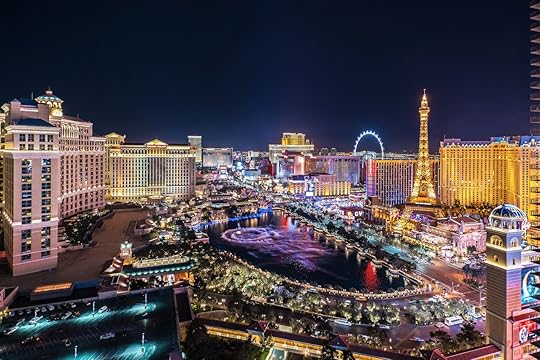
Photo: randy andy/Shutterstock
Nevada is known for welcoming vices that are taboo elsewhere, and in 2017, it added cannabis to that list. But it’s not as easy to consume marijuana as it is to throw down some money on a hand of blackjack.
Laws to know: People 21 and older can possess up to one ounce of cannabis and up to an eighth of an ounce of concentrated marijuana in the form of hash or edibles. Adults can also grow six plants at home. You can’t consume marijuana in public places, including casinos, or in moving vehicles.
Oregon
Sales of recreational marijuana officially started in Oregon on July 1st, 2015, after a vote legalized cannabis in 2014. The state was well prepared as it already grew a large amount of medical marijuana both indoors and outdoors. Now, growers are facing an oversupply, which has pushed the cost of marijuana in the state to extreme lows like $4 a gram.
Laws to know: People over 21 are allowed to have up to one ounce of smokable cannabis on them when outside of their home, and eight ounces inside their home. When it comes to edibles and other products derived from cannabis, adults are allowed 16 ounces in solid form and 72 ounces in liquid form. Additionally, people can have up to four marijuana plants per household. It’s illegal to smoke in a public place, which includes, but is not limited to, bar patios, parks, hallways, and outdoor areas of hotels.
Vermont
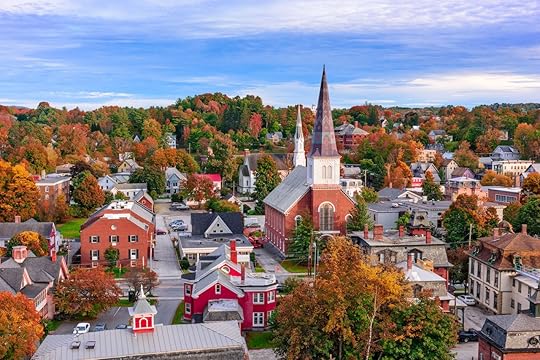
Photo: Sean Pavone/Shutterstock
In July of 2018, Vermont became the first state to legalize recreational cannabis through the state’s legislative body rather than putting the onus for change directly on voters in a ballot initiative. However, the law doesn’t allow for businesses to sell recreational marijuana, so you still need to know somebody to get your hands on some.
Laws to know: It’s legal for people 21 and older to possess up to one ounce of marijuana and to own two mature and four immature plants. You’re not allowed to smoke in a car, on Lake Champlain (it’s federal waters), or in any public place. Selling marijuana is still illegal.
Washington
Washington joined Colorado as the first two states to legalize recreational cannabis, and it’s proven to be a popular decision. More than $1.3 billion in cannabis and cannabis products were sold in Washington state alone in 2017. While it’s easier to acquire cannabis the more west you go, there are dispensaries in the majority of regions in the state.
Laws to know: People over 21 can purchase up to one ounce of smokable cannabis, 16 ounces of edibles in solid form, 72 ounces in liquid form, and seven grams of concentrates. It’s illegal to consume cannabis in the view of the public, which essentially restricts smoking to private residences.
Washington, DC

Photo: Sean Pavone/Shutterstock
The federal government isn’t all that fond of cannabis, but that didn’t stop the nation’s capital from enacting pro-marijuana legislation in 2014. Unlike most of the states with legal recreational cannabis, however, DC has tight restrictions on acquiring weed.
Laws to know: People 21 and over can possess up to two ounces of marijuana and gift one ounce or less to another person 21 or over. “Gift” is the key word, because it’s still illegal for anyone — shop or person — to sell cannabis in DC. It’s illegal to consume cannabis in public places, and that goes for city-owned and federally owned land. Nearly 30 percent of DC is federal land, and you can be prosecuted on a federal level if caught consuming marijuana on it. 

More like this: This map shows where cannabis is legalized around the world
The post Everything to know before going to a state with recreational marijuana appeared first on Matador Network.

London’s latest skyscraper

The London skyline is about to get a facelift, courtesy of this new building shaped like a flower. Aptly named the “Tulip,” the tower will be 1,000 feet high, making it the second tallest in London (just four feet behind the Shard). British architects Foster + Partners revealed plans for the building on Monday, with construction starting in 2020 and a completion date of 2025.

Photo: Foster + Partners
While it’s still unclear exactly how the building will be used, the architects say it will serve as a cultural and educational resource, rather than a commercial or office space. The building furthers local government plans to create a “Culture Mile” to attract more visitors to London’s financial district.
Atop a tall stem, the building will be topped by a glass bud, which is slated to house 360-degree viewing galleries, a bar, and restaurants. The site will also feature a small park, rooftop garden, and sky bridges between observation decks.

Photo: Foster + Partners
Jacob J. Safra, the billionaire who funded the building — as well as London’s famous Gherkin — said in a statement, “The Tulip’s elegance and soft strength complements the iconic Gherkin.” This sentiment was echoed by Norman Foster, founder and executive chairman of Foster + Partners, who said in a statement, “Continuing the pioneering design of 30 St Mary Axe [the Gherkin], the Tulip is in the spirit of London as a progressive, forward-thinking city.” 
H/T: CNN

More like this: London’s newest skyscraper will have a climbing window
The post London’s skyline is getting a new building: the Tulip appeared first on Matador Network.

NYC best outdoor winter activities
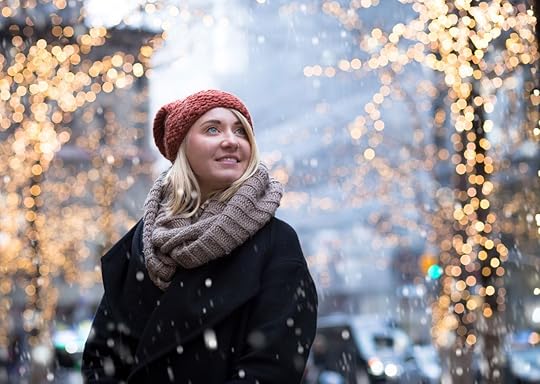
In New York City, we get every season. Our temperatures can rise past the 100-degree mark as well as drop down into the negatives. Whether it’s an extreme, or somewhere in between, you’ll face it all in NYC, but that doesn’t mean we hibernate come wintertime. Sure, you’ll need to bundle up, pack on those layers, and make sure to have warm food and drink, but some of the most fun things to do in the city can only be done in the winter. From ice skating to learning how to snowboard, here are six outdoor activities you can do during winter in NYC.
1. Holiday markets

Photo: Urbanspace/Facebook
Every year, usually around the beginning of December (but sometimes mid-November), several holiday markets pop up in different parts of the city. You can find the major ones in Columbus Circle, Bryant Park, and Union Square. It may just be the magic of the holidays, but while the markets are in the center of urban areas, they feel like Christmas villages separated from the hustle and bustle of NYC. At any market, you’ll find stall upon stall of jewelry, clothing, art, handmade goods, and more, as well as cuisines from around the world. The markets are fun to walk through even if you don’t plan on buying anything, but you’ll have a hard time not finding something you absolutely want to get — whether it’s for you or a loved one.
2. Ice skating
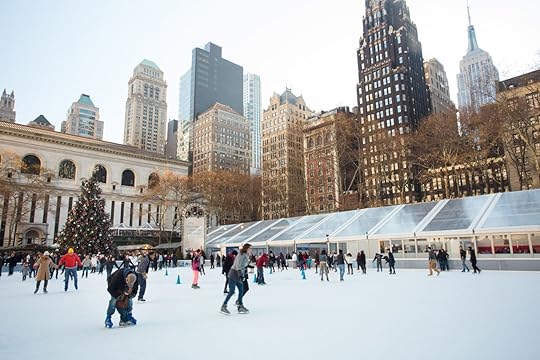
Photo: littlenySTOCK/Shutterstock
You may not want to go ice skating outside in the winter, but NYC’s outdoor ice skating rinks, where you’ll be surrounded by its unique scenery and have incredible views, should sweeten the deal. With ample rinks available all over, you can add ice skating to your day no matter where you are. There’s the rink at Bryant Park, Riverbank State Park in Hamilton Heights, and the World Ice Arena in Queens, just to name a few. Most rinks here will charge a fee to enter and for skate rentals, so be sure to account for that in your plans.
3. Sledding

Photo: a katz/Shutterstock
We get a lot of snow in NYC, so we make the best of what the weather throws at us by having fun with it. While the area may seem like it has a lot of flat ground, there are actually a surprising number of expansive, hilly spaces that lend themselves to being prime sledding territory. Parks will be your best bet, such as Van Cortlandt Park, Morningside Park, Inwood Hill Park, and Prospect Park.
4. Tree lighting ceremonies
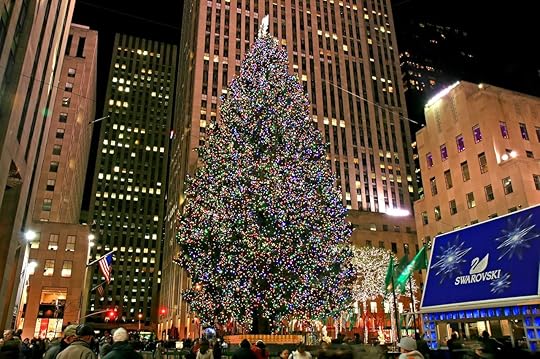
Photo: gary718/Shutterstock
NYC is famous for many things, and tree lighting ceremonies are one of them. Most well-known is the one in Rockefeller Center, where one of the biggest Christmas trees in the world is lit up for the season (last year’s was 75 feet tall). Entry is free and on a first-come, first-served basis, though it will eventually be capped off. If you manage to nab a spot, you’ll witness performances from the Rockettes and different musical acts such as John Legend and Pentatonix, and you might even appear on TV — the event will be broadcast live on NBC. However, if you don’t want to chance not getting a spot or want to avoid the crowds, there are other ceremonies that you can attend. Bryant Park has a tree lighting ceremony that’s just as fun, and it includes a Skate-tacular, where a celebrity narrator will read an original Christmas tale that’s acted out on the park’s ice skating rink by Olympic skaters.
5. Learn how to snowboard

Photo: NYC Parks
You wouldn’t think of NYC as a snowboarding or skiing destination, but every year, the Parks and Recreation department holds a Winter Jam where you can do exactly that. The free festival packs all the best winter activities — snowboarding, skiing, sledding, and eating warm food — into one day-long event in the middle of Central Park. You won’t exactly be shredding snow on black diamond slopes, but you can either learn the basics with an instructor or practice for fun.
6. Walking through the park in the snow
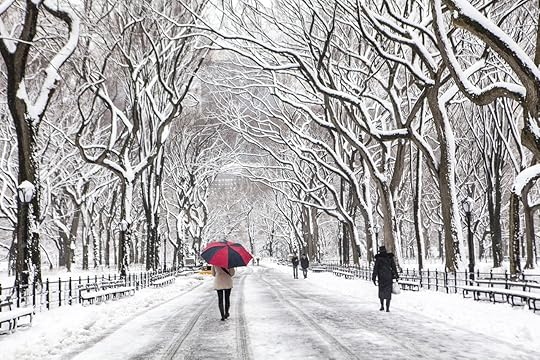
Photo: MISHELLA/Shutterstock
Walking through a park is an activity so simple that it may escape the minds of most, but in winter in NYC, when the white snow has blanketed all of the greenery and structures, it’s one of the things that should be at the top of everyone’s list. There’s an abundance of parks in the five boroughs so you can’t go wrong no matter which one you choose, but Central Park in Manhattan, Van Cortlandt in the Bronx, and Fort Greene Park in Brooklyn are especially magical. Bonus, because they’re all so large and spacious, you can have snowball fights galore. 

More like this: 5 ice rinks that aren’t in Rockefeller Center or Central Park
The post 6 best outdoor activities for winter in NYC appeared first on Matador Network.

November 19, 2018
Street art in Rome purifies the air
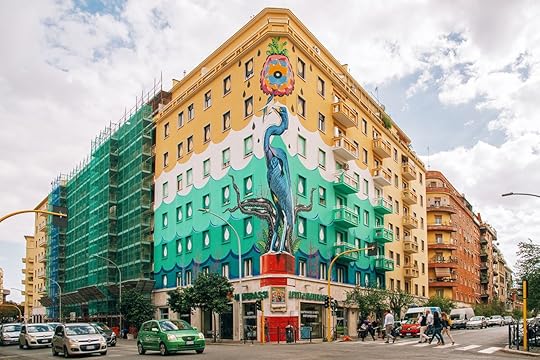
Street art is usually a treat for the eyes, but rarely does it provide tangible benefits beyond the aesthetic. The Hunting Pollution mural, however, by Milanese street artist Federico Massa, is beautiful and improves the air quality of Rome. Covering over 10,000 square feet of a seven-story building, the mural is made entirely of anti-pollution paint and is intended to raise awareness of environmental problems like global warming and animal extinction. Fittingly, it features the tri-colored heron, a species in danger of extinction. Ostinese, the neighborhood where the mural is displayed, is famous for its urban art, including iconic pieces like the Wall of Fame by JB Rock.

Photo: Iena Cruz
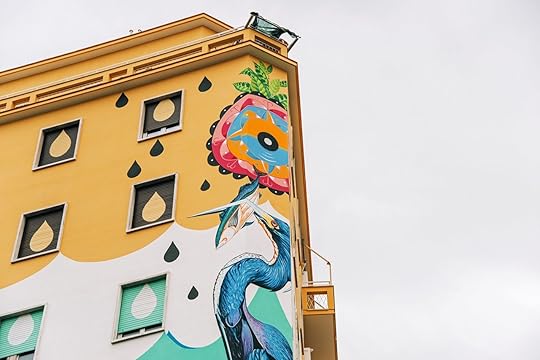
Photo: Iena Cruz
The Airlite paint used in the mural neutralizes pollutants and smog, and it can break down the levels of nitrogen oxides emitted by cars. Unlike traditional paint, Airlite paint dries and becomes cement within four hours. So much of it was used in this mural that it produces the same air-cleansing effect as a forest with 30 trees. Masa plan to paint Airlite murals in other cities as well, especially the United States.
Hunting Pollution was commissioned by Yourban2030, a female non-profit that uses art, cinema, fashion, and music to call attention to a range of environmental issues. If the eco-painting trend takes off, we may see a rise in sustainable street art. 
H/T: Lonely Planet

More like this: The 9 best street art cities in the world
The post This street art piece improves Rome’s air quality appeared first on Matador Network.

Digestif cultures around the world

There are times when overeating is perfectly acceptable. Thanksgiving, for instance, or just the holidays in general. Then there are times when it’s less socially acceptable, like when you’re staring down a burger made with more than a pound of beef for a whimsical food challenge. Regardless of how you go about overeating, it’s been happening for as long as people have had an abundance of food.
To combat exploding stomachs, cultures around the world turn to digestifs, or shots of liquor that are said to aid digestion. The next time you take in a little more than you can handle, try these digestifs from around the world.
Germany

Photo: Jagermeister
Germany is a beer-drinking country, but when it comes to an after-dinner drink, Germans reach for liquor and liqueurs. Eau de vies (spirits made from fruit) are common, as are bittersweet liqueurs. German eau de vies isn’t generally widely distributed outside the country, but there’s a good chance you’ve sampled the most famous German digestif without even realizing it: Jägermeister. Another option when you’re looking for something bitter is Underberg.
Digestifs to try: Jägermeister and Underberg
Switzerland
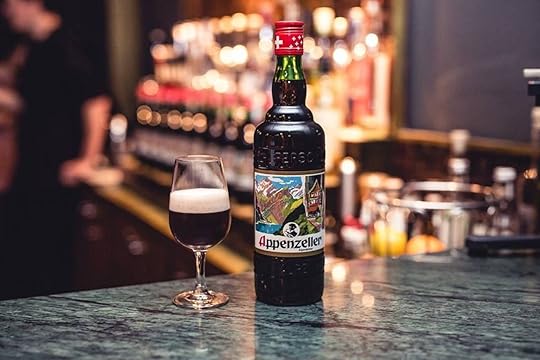
Photo: Appenzeller Alpenbitter/Facebook
Switzerland is bordered by three strong digestif countries: Italy, Germany, and France. So it makes sense that the Swiss would make and indulge in a digestif or two of their own. Swiss digestifs are bitter and herbal like what you’d find in Germany and Italy, and they’re the perfect thing to warm you up after (or during) a day on the slopes.
Digestifs to try: Appenzeller Alpenbitter and Fernet del Frate Angelico
France

Photo: Hennessy/Facebook
You’re going to need an after-dinner drink or two to get down all that buttery, cheesy French food. Luckily, France has no shortage of digestif options. There’s pastis, an anise-based drink similar to absinthe, and génépy, which is another wormwood-based liqueur. Then there are the grape- and apple-based liquors people outside of France are more familiar with, such as Cognac, Armagnac, and Calvados.
Digestifs to try: Dolin Genepy le Chamois, Green Chartreuse, Berneroy VSOP Calvados, and Hennessy
Mexico
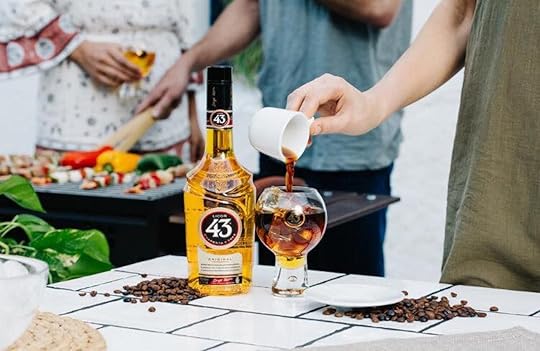
Photo: Licor 43/Facebook
“In Mexico City, the most popular digestif is a Carajillo,” Danny Mena, the co-founder of Mezcales de Leyenda and the chef and restaurateur behind La Loncheria, tells Matador Network. It can be made from brandy, whiskey, or anise-flavored liqueur, but in Mexico, “It’s Licor 43 on the rocks that then gets a shot of espresso poured over. It’s pretty delicious!”
Digestifs to try: Licor 43
Czech Republic
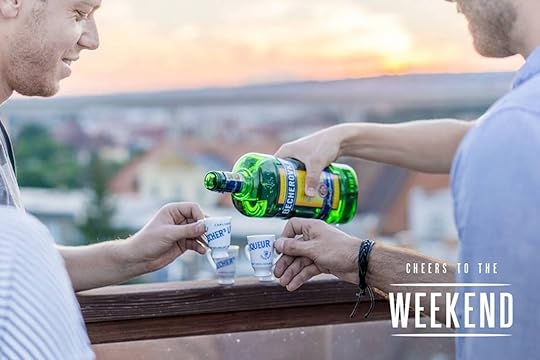
Photo: Becherovka Original/Facebook
The Czech Republic is another beer-drinking country that picks up a spirit after a long meal. Absinthe is popular as are spirits flavored with spice and herbs. Peppermint and cinnamon are popular flavors, but unspiced fruit brandies are common, as well. All are taken as a shot or sipped.
Digestifs to try: Becherovka and Bozkov
Italy

Photo: Fernet-Branca
Italy is the home of amaro, one of the most popular types of digestifs. The word translates to “bitter” and refers to a class of liquors spiced with herbs. There are many different regional styles of amari that range from mildly sweet to being so bitter you want to scrape your tongue off. Finding the right one is just a matter of sampling however many you can.
Digestifs to try: Fernet-Branca, Nonino Quintessentia, and Cynar
Hungary
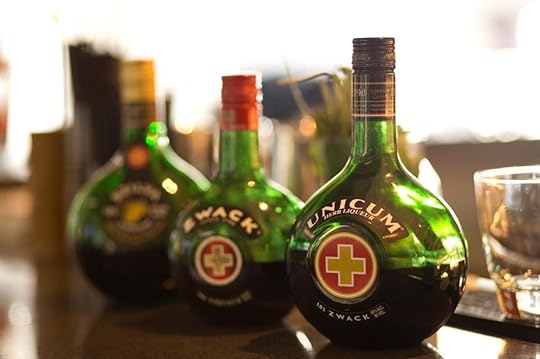
Photo: Zwack/Facebook
Digestifs in Hungary are big business. According to the Budapest Business Journal, digestifs are the most sold category of liquor in the country ahead of vodka, traditional pálinka, and everything else. Hungary’s digestifs are often flavored with secret recipes that include dozens of different herbs.
Digestifs to try: Zwack
Norway and Sweden

Photo: Linie Aquavit/Facebook
Scandinavian countries like Norway and Sweden eat heavy foods, and the traditional after-dinner drinks evolved to be just as powerful. The drink of choice is aquavit, an herbal spirit spiced with caraway, dill, and other herbs. Aquavit loosely translates to “water of life” and has been made for centuries. Once primarily only made in northern Europe, there are aquavits made around the world today.
Digestifs to try: Linie and Krogstad 

More like this: Where to go this Thanksgiving instead of going home
The post What countries around the world drink after they’ve eaten way too much appeared first on Matador Network.

Yellow Tail wine Super Bowl campaign

For those who watch the Super Bowl exclusively for the commercials, this could be the opportunity of a lifetime. Yellow Tail, an Australian wine brand, is looking to create a Super Bowl commercial based entirely on user-generated content. To jump-start its “Tastes Like Happy” campaign, Yellow Tail is inviting fans to create and submit short videos of what makes them happy. The two winners will have their videos featured in the Super Bowl commercial, and get some pretty wide-ranging social media exposure. One of the two winners will also receive the grand prize: an all-expenses-paid trip (value is $15,000) to their happy place, wherever that may be.
To enter, share a six-second video of what makes you happy on Instagram or Twitter, with the hashtags #tasteslikehappy and #contest. Iain Douglas, Chief Marketing Officer for Deutsch Family Wine & Spirits (marketer for Yellow Tail) said in a press release, “This is a shot at stardom, a real opportunity to gain thousand — even millions — of followers virtually overnight.”
Entrants must reside in the United States and be at least 21 years old. Videos must also be original, submitted in English, and will be judged based on quality, creativity, and the successful expression of a visually stimulating “happy moment.” The contest runs until November 28. View the official rules here. 

More like this: The most amazing wine regions on the East Coast
The post Win a free trip and get your face in a Super Bowl commercial with Yellow Tail wine appeared first on Matador Network.

Matador Network's Blog
- Matador Network's profile
- 6 followers



